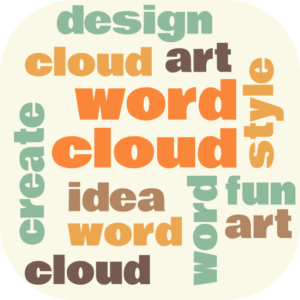As a researcher, words and data play a crucial role in your work. Whether you’re analyzing qualitative data, conducting literature reviews, or summarizing research findings, word clouds can be a valuable tool in your daily tasks. With WordCloud.app, you can transform words into visually stunning and informative representations that can enhance your research process and communication.
1. Analyzing and Visualizing Qualitative Data
WordCloud.app allows you to create word clouds from text, making it easier to analyze and visualize qualitative data. By simply entering your text or uploading a document, you can generate a word cloud that highlights the most frequent and prominent words in your data. This visualization can provide you with a quick overview of the main themes, topics, and recurring keywords in your research, helping you identify patterns and gain valuable insights.
Moreover, with WordCloud.app’s customizable features, you can choose from a variety of shapes, colors, and fonts to match the aesthetics and purpose of your research. Whether you want to present your findings in a conference presentation or include them in your research report, word clouds can effectively summarize and communicate complex information in a visually engaging manner.
2. Literature Reviews and Concept Mapping
Word clouds can also be a great aid in literature reviews and concept mapping. By using WordCloud.app to create word clouds from scholarly articles, books, or web pages related to your research topic, you can quickly identify the most frequently mentioned terms and concepts. This can help you form a comprehensive understanding of the existing literature and identify research gaps.
Furthermore, word clouds can be an excellent way to visually represent the connections between different concepts or keywords. By creating multiple word clouds and comparing them side by side, you can identify commonalities, overlaps, and relationships between different studies or concepts. This can serve as a starting point for developing conceptual frameworks or organizing your literature review.
3. Data Presentations and Communication
In addition to aiding your research process, WordCloud.app also offers a range of options for data presentations and communication. Once you have generated your word cloud, you can easily save and export it in various formats, including image files, which can be seamlessly shared in presentations, reports, or even on social media platforms.
Moreover, WordCloud.app provides integration with popular collaboration tools such as Figma and Miro, allowing you to incorporate word clouds into your visual strategy and collaborate with your research team more effectively. By using the WordCloud.app plugins for Figma and Miro, you can easily create, edit, and share word clouds within your design and collaboration workflows.
Conclusion
WordCloud.app is a versatile and powerful tool that researchers can use in various aspects of their work. From analyzing qualitative data to visualizing concepts and communicating research findings, word clouds can enrich your research process and help you present information in a visually appealing way. So, go ahead and explore the possibilities with WordCloud.app and make your research more impactful, engaging, and fun!

